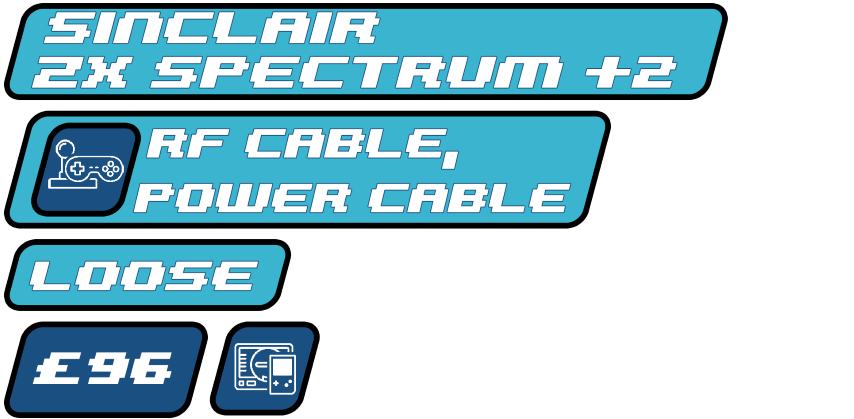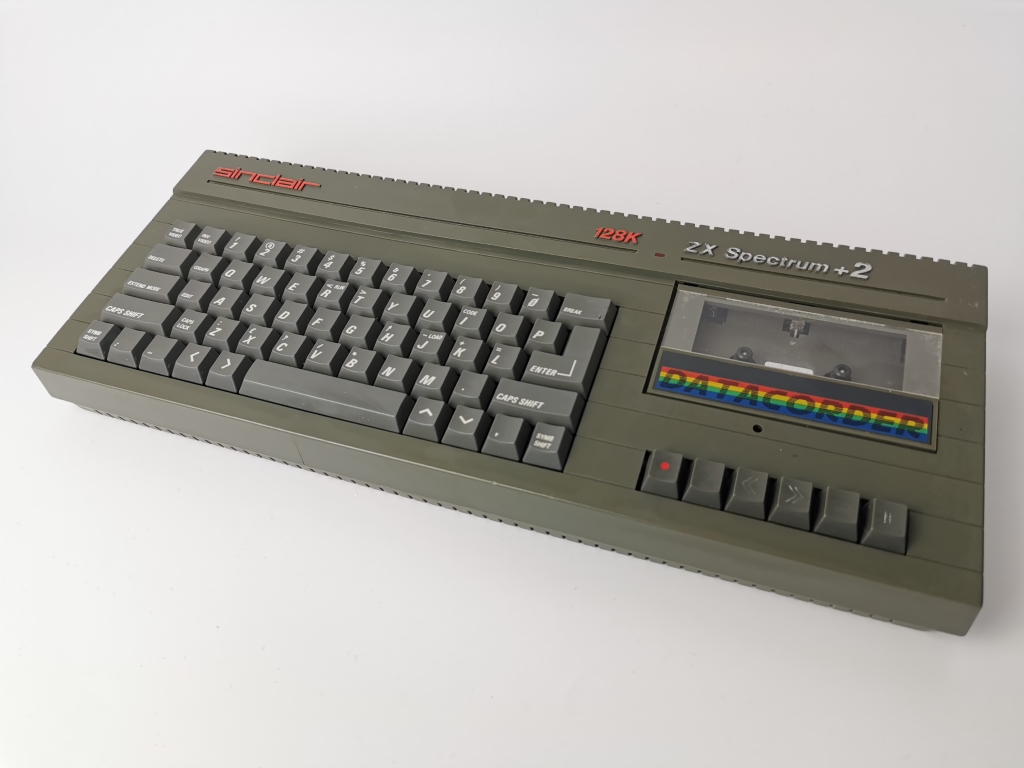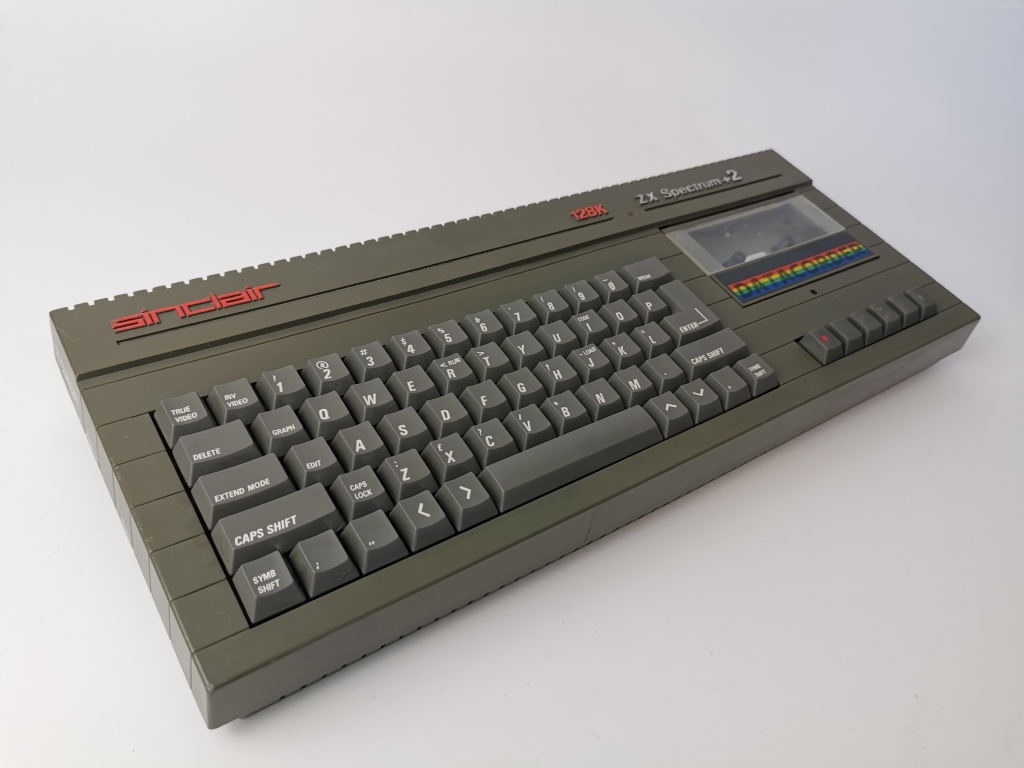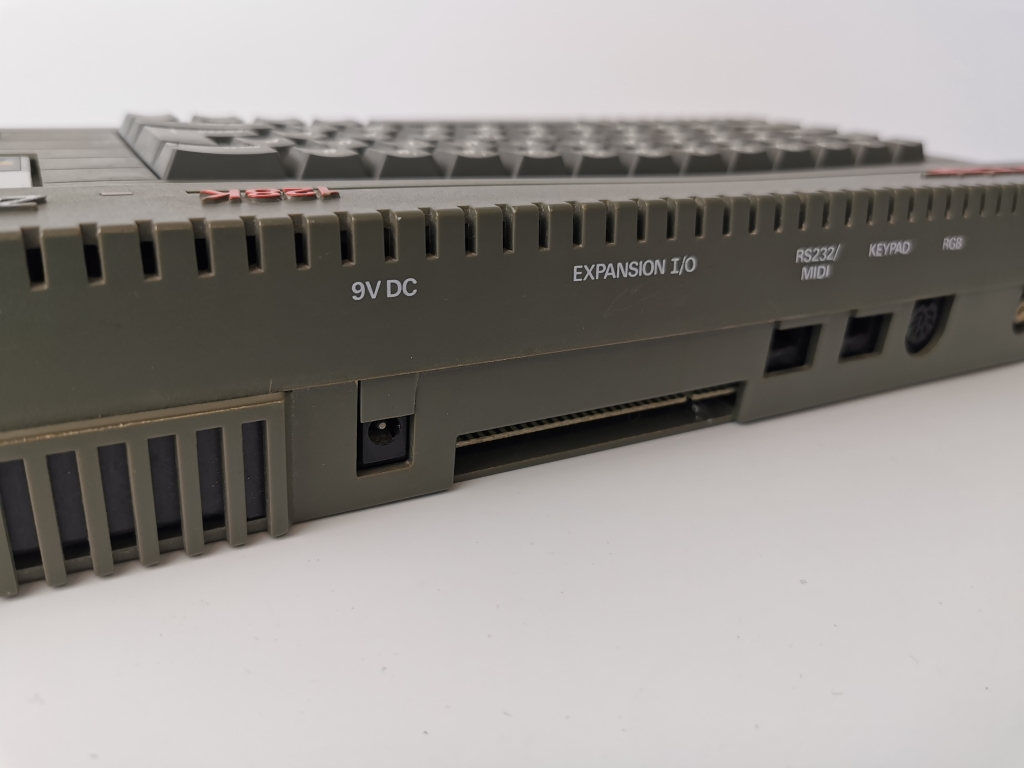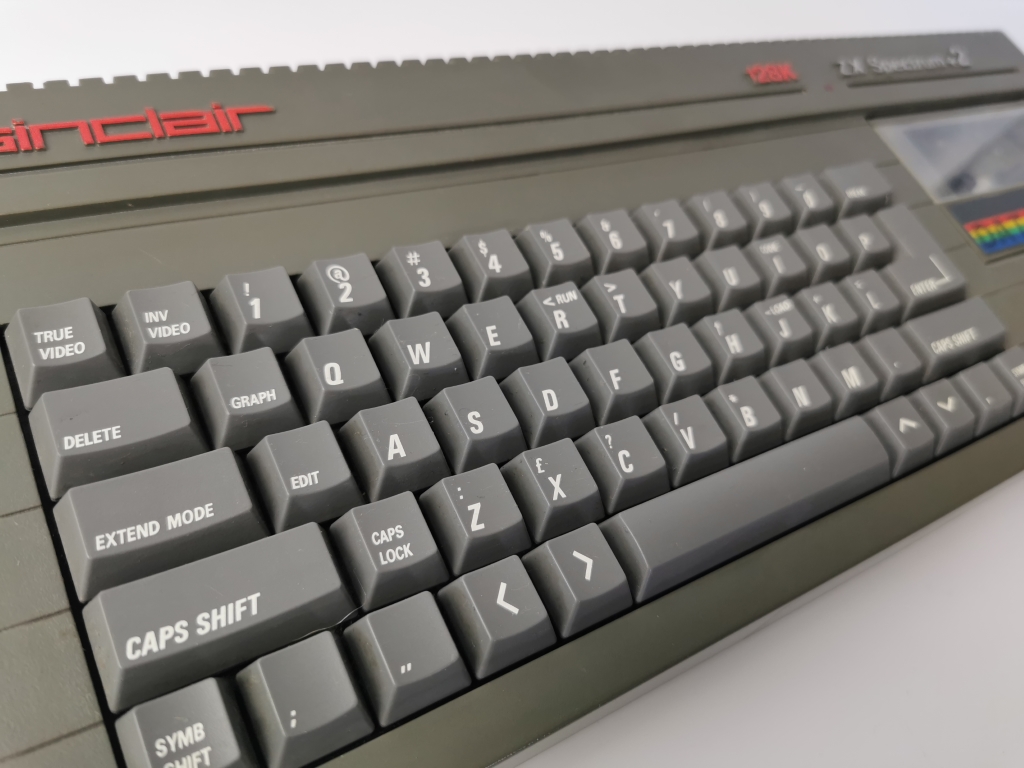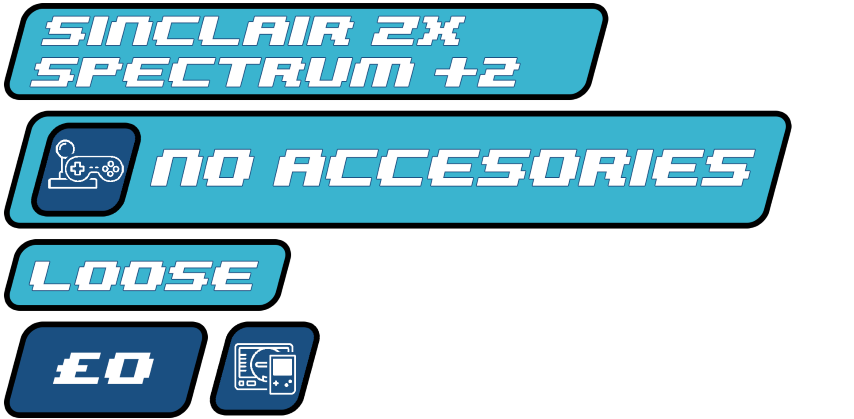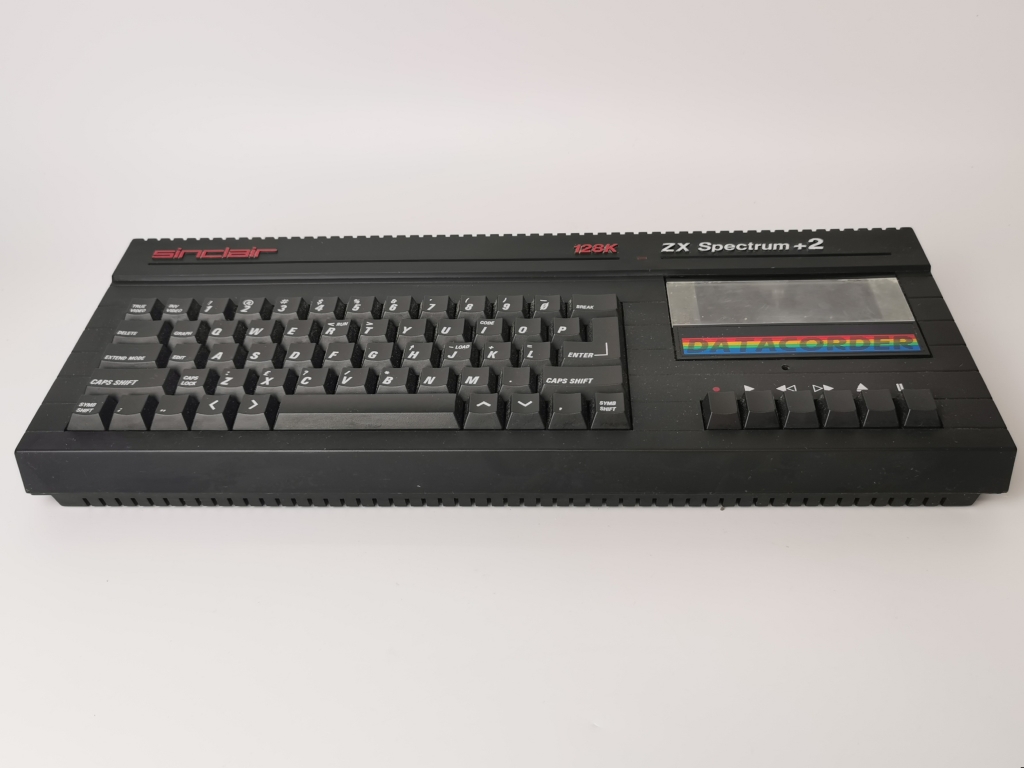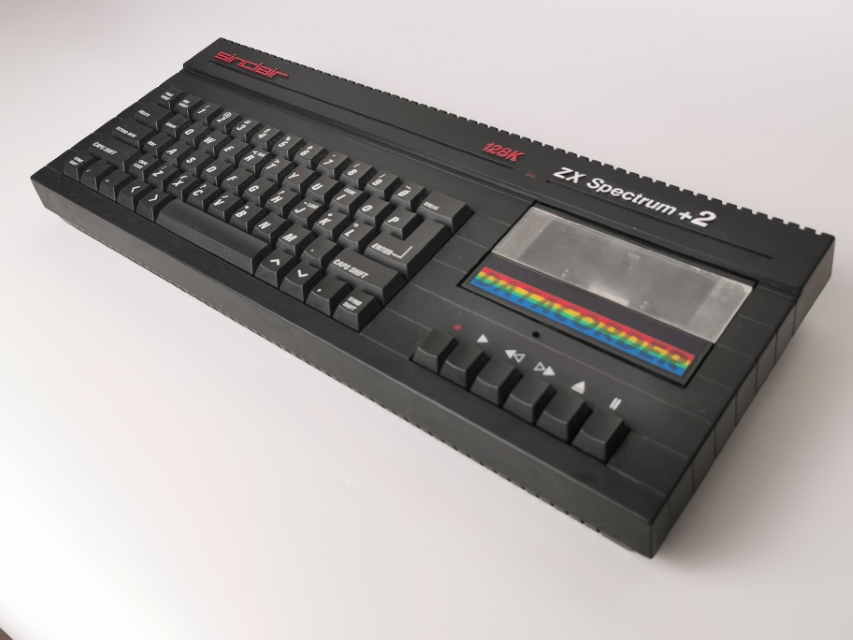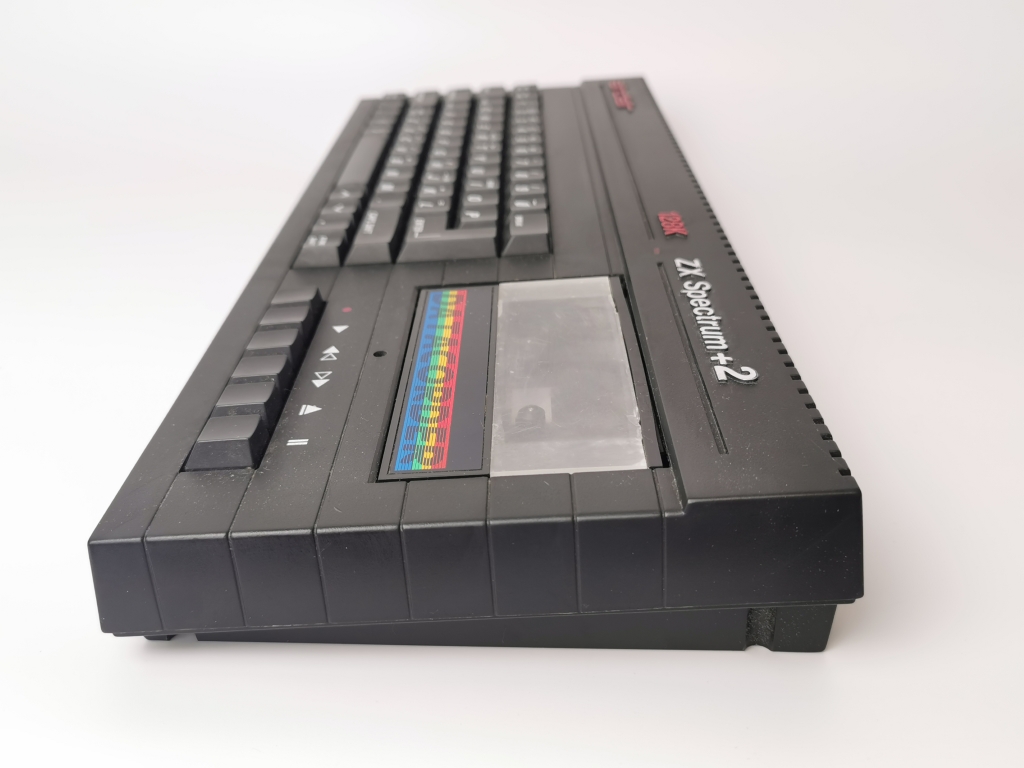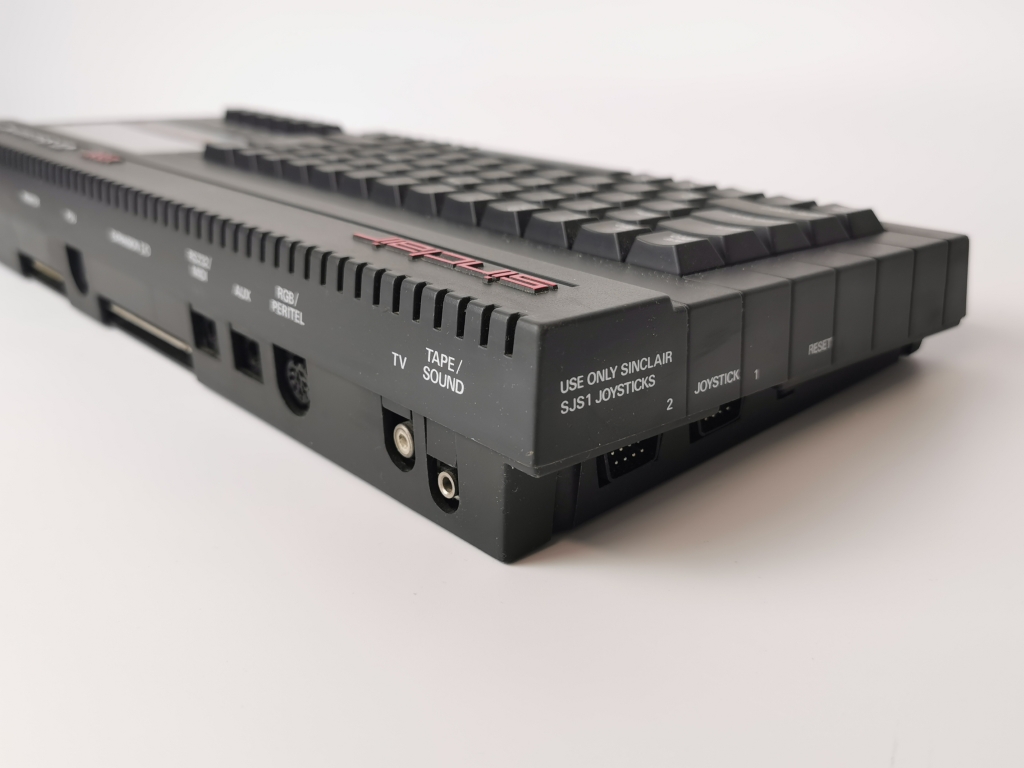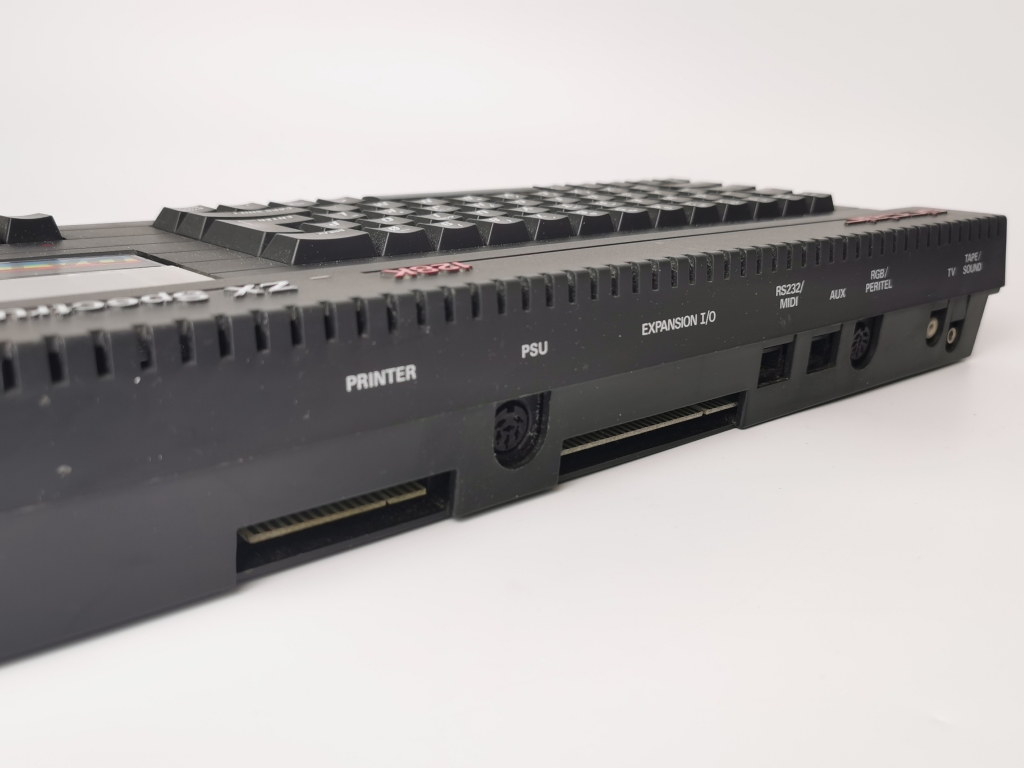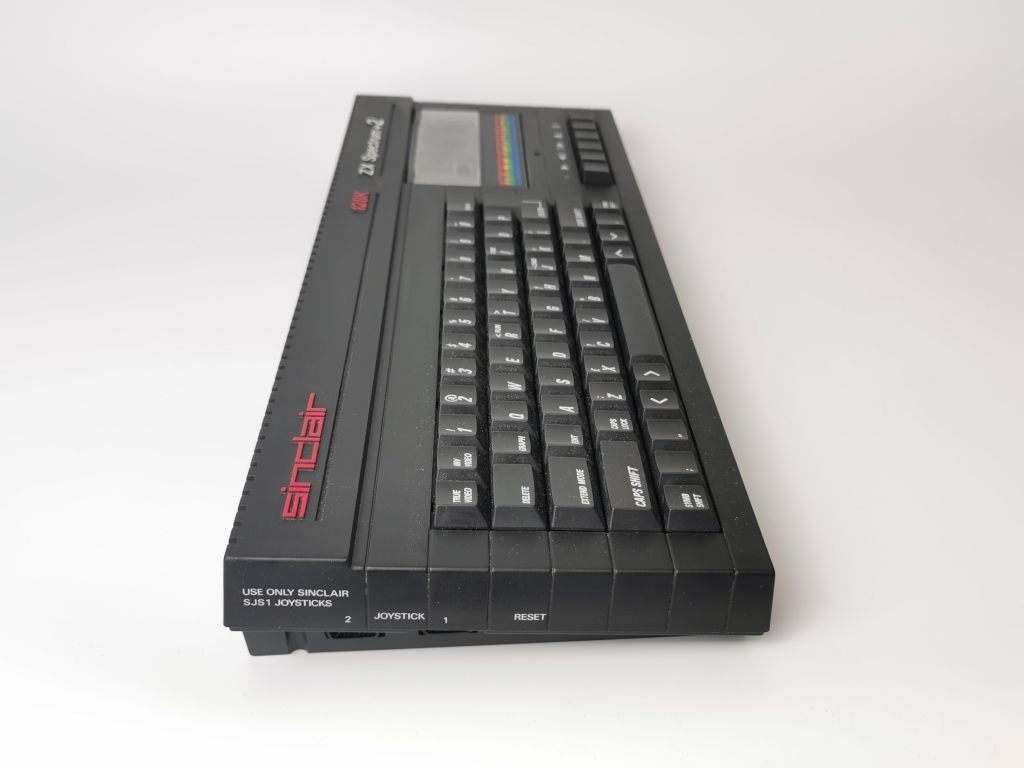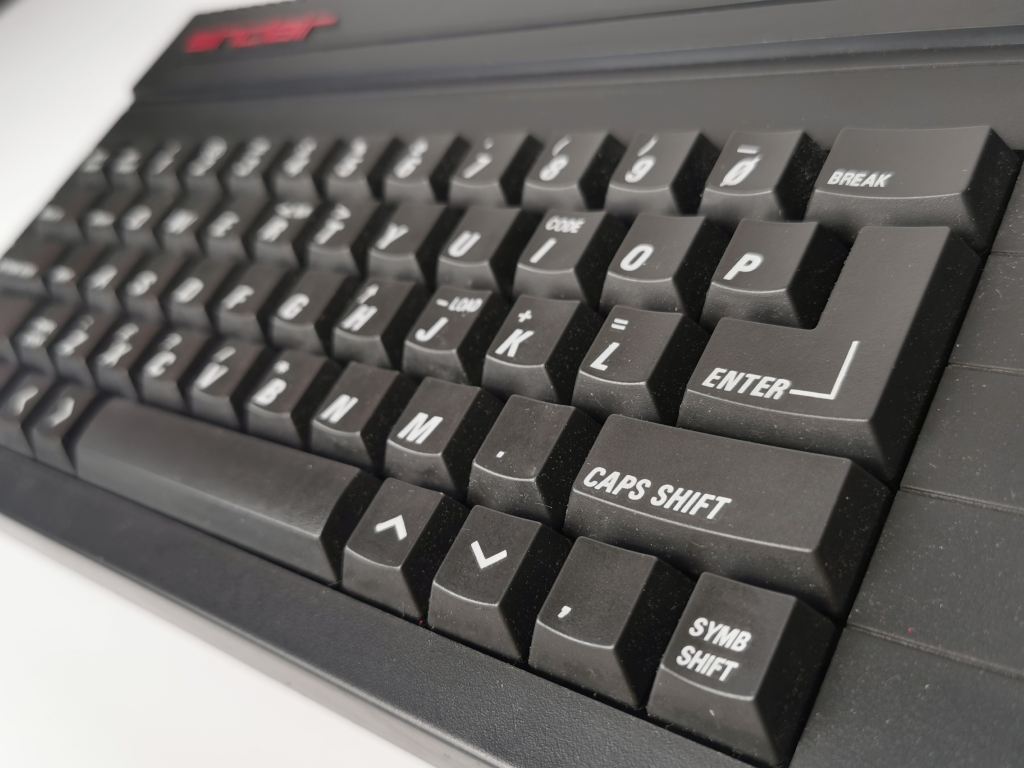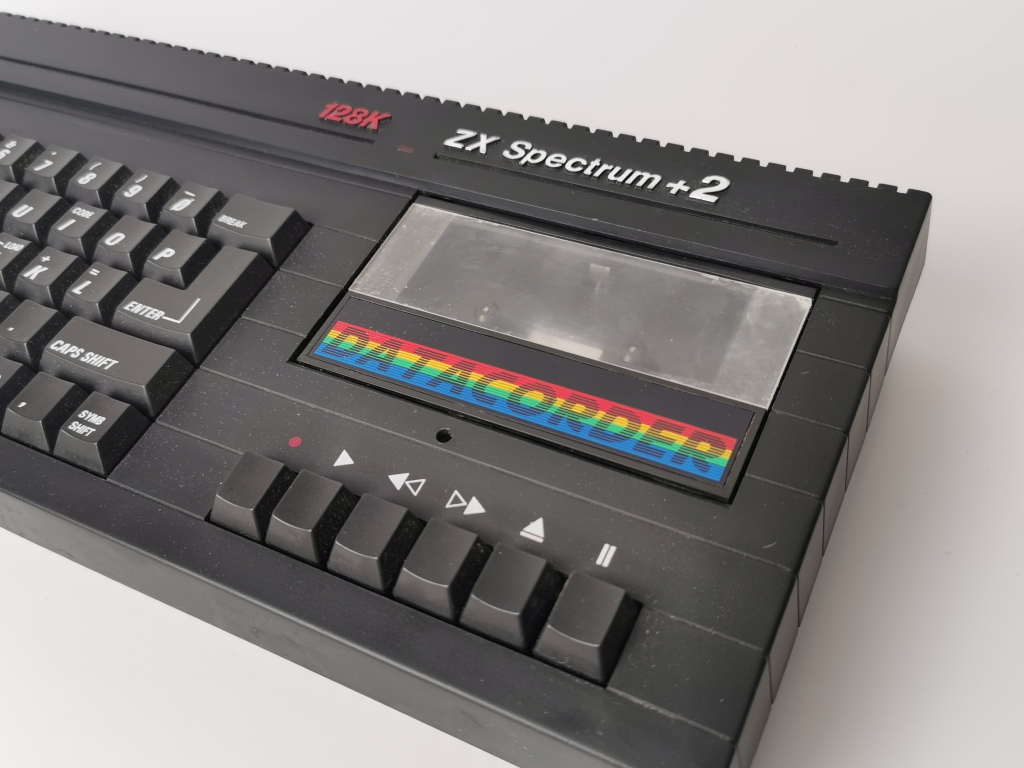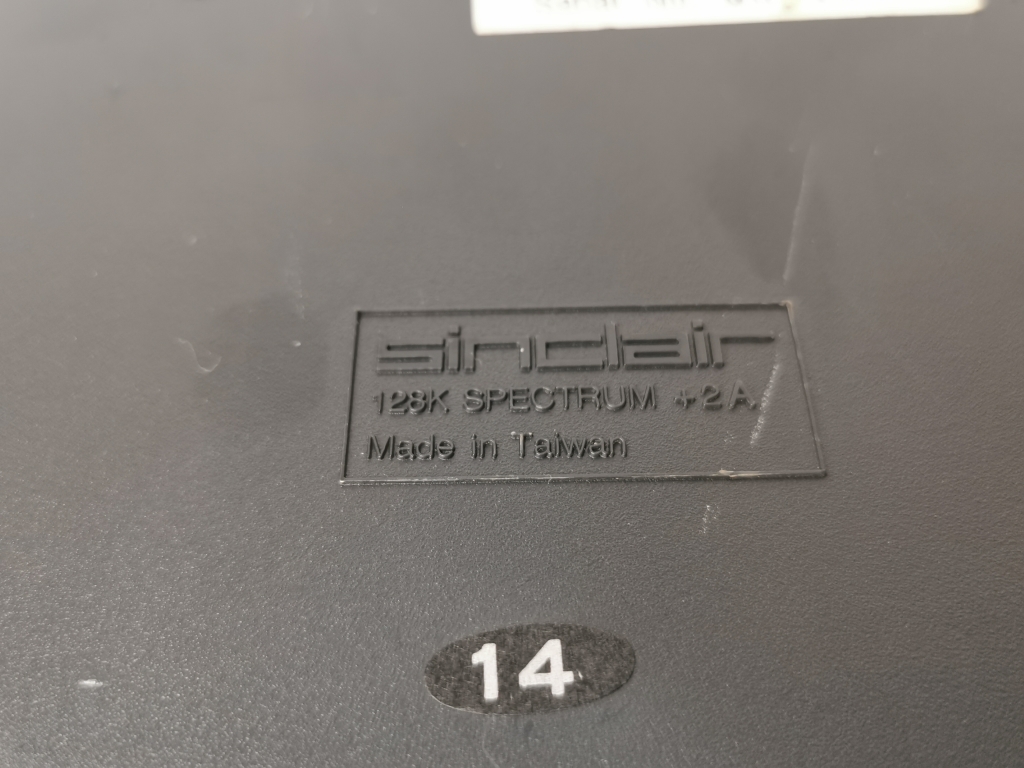Sinclair ZX Spectrum +2
The ZX Spectrum +2 Was released in 1986 was Amstrad’s first Spectrum, coming shortly after Amstrads purchase of the Spectrum range and “Sinclair” brand in the same year
After the sale of Sinclair’s computer section to the competitor Amstrad, they continued the production of the Spectrum series, and also had them developed further to improve the chances on the market. The result of this revision was at first the Spectrum +2. made in Taiwan it was the first Sinclair product built outside the UK. Amstrad’s greater emphasis on quality control made it far more reliable than the first Spectrums.
The Spectrum +2 is very similar in shape and functionality to the Amstrad CPC-464.
Produced were three different versions of the Spectrum +2, which mainly differed in the colour of the housing (grey for the +2 and black for the +2A and +2B).
The Spectrum +2 contained a significantly bigger case, which next to a finally fully-fledged spring-loaded keyboard, it also contained a built-in cassette recorder dubbed the “Datacorder” in the style of the in-house Amstrad CPC464. Furthermore, the new Spectrum was now equipped with 2 joystick ports. Externally, it was very similar to Amstrad’s CPC464, but was in most respects identical to the ZX Spectrum 128.
The new keyboard did not include the BASIC keyword markings that were found on earlier Spectrums, except for the keywords LOAD, CODE and RUN which were useful for loading software.
The ZX Spectrum +2 power supply was a grey version of the ZX Spectrum+ and 128 power supply.
The +2 boasted a menu system, almost identical to the ZX Spectrum 128, where one could switch between 48k BASIC, and 128k BASIC programming. The ROM was altered to account for a new 1986 Amstrad copyright message.
Even though it used several features of the CPC-464, such as the built-in tape recorder and a good full-stroke keyboard, the sound chip used is still the well-known Yamaha AY-3-8912 which is the sound chip of the MSX computers, Oric computers, and the Atari ST series, and also many other computers of the 80’s. It was the most popular sound chip at the time.
As with the other 128k models, and due to the limitations of the Z80 CPU, the 128kb RAM was not directly usable, but could be used as a RAM disk.
- NAME: ZX SPECTRUM +2A
- MANUFACTURER: Sinclair
- TYPE: Home Computer
- ORIGIN: United Kingdom
- YEAR: 1986
- BUILT IN LANGUAGE: Sinclair Basic 48k (compatibility mode) and Sinclair Basic 128k
- KEYBOARD: Full-stroke keyboard, 58 keys
- CPU: Zilog Z80 A
- SPEED: 3.5469 MHz
- RAM: 128 kb (8 x 16k banks)
- ROM: Spectrum +2 : 32 kb
- Spectrum +2A/B : 64k
- TEXT MODES: 32 x 24
- GRAPHIC MODES: 256 x 192
- COLORS: 8 with two tones each (normal and bright)
- SOUND: 3 channels, 8 octaves (Yamaha AY-3-8912)
- SIZE / WEIGHT: 44 x 17,5 x 5,5 cm / 1,525 kg
- I/O PORTS: UHF PAL TV port, Serial interface (RS232) port, Parallel Printer port (8 bit), Auxiliary interface port, RGB Monitor (and PERITEL TV) port, MIDI output port, Two Joystick ports, Tape/Audio Out, Expansion I/O port (full Z80 bus)
- BUILT IN MEDIA: Tape Recorder
Amstrad also took a very different line in marketing the Spectrum +2. Unlike Sinclair, Amstrad did not attempt to market the Spectrum as anything other than a games machine and sold it in packages such as the “James Bond 007 Action Pack” (with bundled games and a light gun). This approach was extremely successful, and the Spectrum +2 sold very well.
I was given this as untested, I do not currently have a power cable so I am unsure if it works.
Sinclair ZX Spectrum +2A
The ZX Spectrum +2A was a new version of the Spectrum +2 using the same circuit board as the Spectrum +3. It was sold from late 1988 and unlike the original grey +2 was housed inside a black case. The Spectrum +2A/+3 motherboard (AMSTRAD part number Z70830) was designed so that it could be assembled with a +2 style “datacorder” connected instead of the floppy disk controller. Amstrad planned to introduce an additional disk interface for the +2A/+2B called the AMSTRAD SI-1, but it never appeared. If an external disk drive was added, the “+2A” displayed on the system menu text would change to “+3”.
The power supply of the ZX Spectrum +2A used the same pinout as the +3 and has “Sinclair +2” written on the case.
